We may earn revenue from the products available on this page and participate in affiliate programs. Learn More ›
Well, there went the whole night, I thought as soon as I heard the loud “huff” from the grizzly bear that was circling through the seemingly impenetrable alders and brush behind my tree stand. It was followed by a steady pounding lope through the timber. I couldn’t see the bear a mere 20 or 30 yards away, but I could hear each step as his soft, scarred foot pads pushed into the dry leaves.
I’d been listening to his approach for about a minute, hearing sticks snap as he lumbered closer. I hoped he would get on the trail that would take him directly to the bait and upwind of me. Instead, he pushed through the dense brush on a path that would take him downwind. I crossed my fingers and hoped that my Ozonics would keep him from smelling me. I’ve had many all-night sits and potential opportunities spoiled by a downwind bear. The grizzly bears that I hunt are as spooky as the cagiest whitetail. If you blow it, it’s over.
My ears followed each step as he crossed my wind—I’d lucked out. I quietly toggled the safety of my 6.5 Creedmoor to “fire.” But the bear’s direction would take him across the trail I use to approach the bait. When he hit the scent of my tracks, he blew, then barreled through the undergrowth. After careful planning and patient waiting, my opportunity had evaporated—as often happens when trying to hunt grizzlies over bait in interior Alaska—or had it?
The 6.5 Creedmoor: The Gift that Keeps Giving
To be honest, the only reason it occurred to me to try and kill a grizzly bear with a 6.5 Creedmoor is the amount of reflexive, thoughtless pushback the cartridge gets from a small-but-virile group of suburban mountain men and conspiracy theorists. This criticism of the Creedmoor pops up on any web story that even mentions the cartridge—and lots that don’t! Although it’s undeniably the most popular contemporary hunting cartridge we have, the mere penning of the name “Creedmoor” in any story or article is like a truth serum that provokes an automatic outpouring of feelings and broken sentences from the unsuspecting subject (or reader, in this case). You’ll see comments like:
“I knew it! You had to include the man bun cartridge!”
“It’s only popular because—marketing! Hype!”
“Hornady pays all you gun writers to lie about how good it is!”
“Needmoor!”
“Crudmoor!”
“I love lamp!”
Get the picture? It’s a truly involuntary response, and I love it. I’m fine with the Creedmoor just being an accurate, mild, good-performing cartridge, but responding to these kneejerk—and baseless—opinions is significantly more entertaining.
I do understand why so many folks are annoyed at the success of the 6.5 Creedmoor, and with anyone who has good things to say about it. We often get attached to the cartridges we like, and it’s annoying as hell to have some adult-onset hunter tell us how great their shit is when they really don’t know anything. Rather, they’re just regurgitating things that some other dimwit told them. When what we have works just fine, it just sounds like noise, and much of it is just that. Noise.
What gets lost is the simple truth that the 6.5 Creedmoor is a genuinely great cartridge—both within the context of what it’s designed to do across the course, and what it can do as a hunting cartridge. Yes, there are more optimal cartridges for a variety of purposes, and there are older cartridges that are similar in many ways. Good for them. Shoot what you like.
The “Needmoor” Delusion
One of the most common sophistries about the 6.5 Creedmoor is that it’s anemic and underpowered—unable to cleanly kill the daintiest of deer. It leaves poor blood trails, spilled kombucha, and the scent of patchouli in its wake.
But at reasonable distances, the 6.5 Creedmoor delivers plenty of penetration and terminal performance to kill any animal in North America cleanly. If you’re wanting something to blame for a poor result, you likely need to look no further than the nearest mirror.
Many people will thumb their nose at the Creed for being too little, but opt for the classic .30/06 with 180-grain bullets. Hell of a cartridge, no? Indeed. Two world wars. But do you really believe that .914 millimeters difference in diameter and 40 additional grains of mass is going to make a huge difference in how quickly you can kill a deer, elk, or moose? Larger, more powerful cartridges can deliver more damage and devastation—and they are generally more forgiving when it comes to impact with heavy bone and less-than-perfect shot angles. How much more? That’s debatable. As a baseline, if you’re choosing and taking ethical, careful shots, a good 140- or 143-grain 6.5mm bullet will kill stuff just as dead—often just as quickly as bullets that are a little bit larger, fired at similar velocities.
Back to Bears
“I already know the end of this story,” I told shooting editor John B. Snow, who was sitting across two stacks of shot-up targets and a bowl of salsa at our 2023 gun test. While measuring groups and voicing my anticipation of this year’s spring bear hunting, I’d half-jokingly said “I should shoot one with the Creed this year.”
“You have to,” was Snow’s reply.
I’m fortunate to have the opportunity to hunt grizzly bears every spring near my home in Alaska. After killing a brace of bears with my recurve bow and modern arrows, I killed a large grizzly with a longbow and knapped stone arrowhead. After that, I stepped into the 1800’s with a .50-caliber percussion muzzleloader shooting patched round balls. That ol’ blunduerbuss killed a big grizzly dead too. Last season, I was planning to hunt with my recurve, but a close encounter with a sow grizzly on the ground persuaded me to employ my .338 Win. Mag. I’d journeyed from the stone age of stick and string, to the modern Alaskan staple .338. It only made sense that I take the next step in this evolutionary journey and select the ultimate, most sophisticated cartridge for anything: the 6.5 Creedmoor.
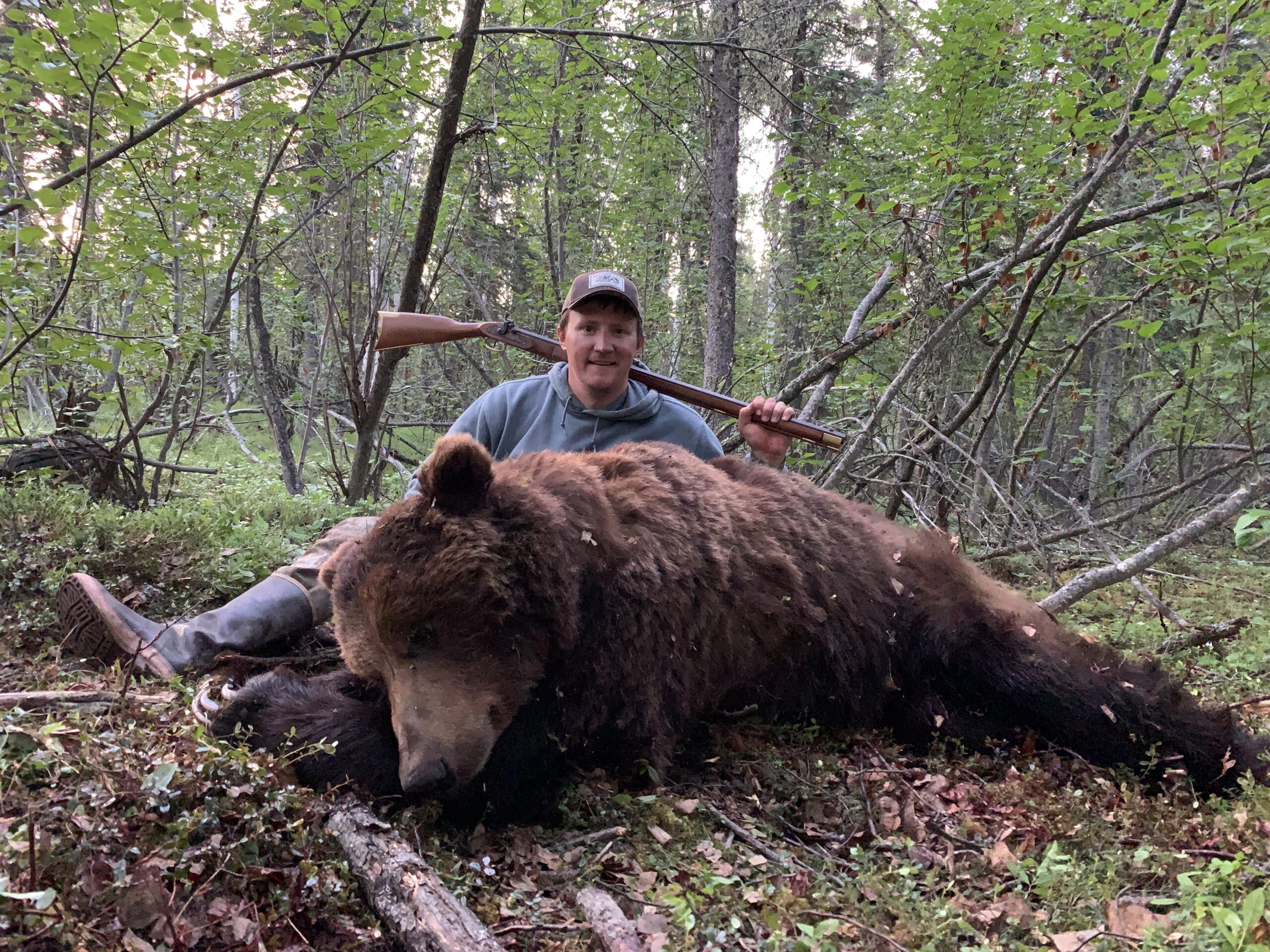
“Getting the shot will be the tough part,” I told Snow. “After that, it’s gravy. I shoot it in the lungs, it’ll run maybe 50 or 60 yards and die.” That’s what happens when you shoot stuff through both lungs. With a smiling sense of purpose, I grabbed a few boxes of 140-grain Nosler Partitions that were left over from our accuracy testing and stuffed them in my suitcase. Partitions are an excellent legacy hunting bullet that aren’t bonded, but retain a good amount of their weight. Plus, I’ve got to disguise the fact that Hornady is paying me to write this story too. It’d be too obvious if I employed my favorite 143-grain ELD-X bullets.
I chose to use my well-used Winchester XPR for this task. The XPR is one of my favorite budget hunting rifles, and I’ve used a number of them. This particular XPR has become a traveling rifle of sorts. If someone needs a rifle for a hunting trip for whatever reason, that’s what I give them. In all, It has killed five Dall sheep, about a dozen caribou, several Sitka blacktail deer, and a moose too—if I remember correctly.
READ NEXT: Most Accurate 6.5 Creedmoor Ammo
Getting the Shot is the Hard Part
Although I’ve done a bit of spot-and-stalk hunting for coastal brown bears, most of my hunting for grizzlies in interior Alaska is over bait. It’s a relatively simple process, but likely the most time-consuming and persistence-intensive hunting that I do. Where I hunt, a grizzly will visit a bait site usually no more than two or three days in a row before moving on. They don’t usually come in to eat regularly like black bears will, and they might show up anytime between 6 p.m. and 7 a.m. You’ve got to be there when they show and, no matter what, don’t let them smell you. If they get your wind, it’s over. Better luck next year. Usually it takes about a month of hunting for me to get a shot opportunity—sometimes longer.
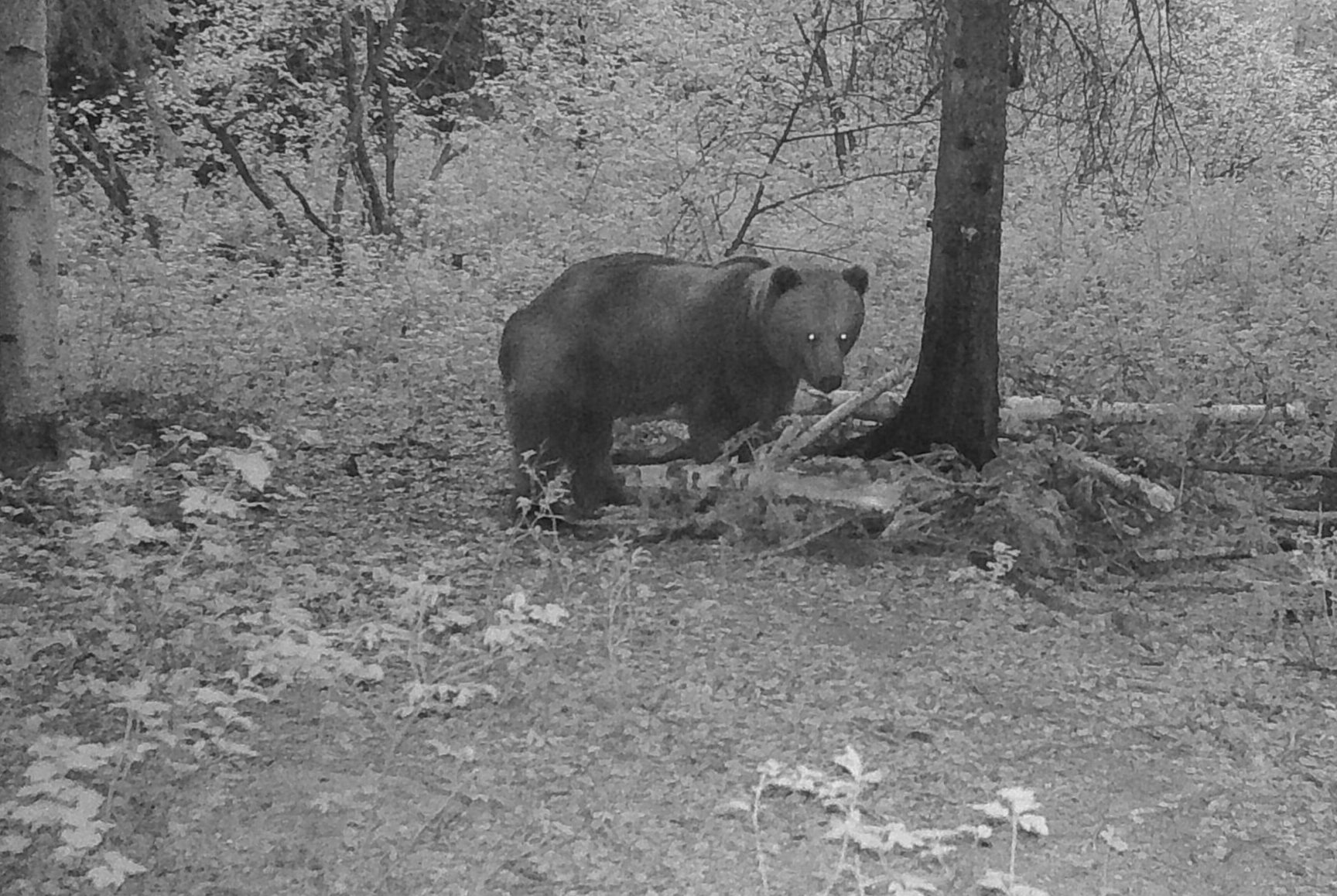
Getting the shot is the most difficult task, killing bears is actually pretty easy. Even the biggest coastal brown bear can be killed quickly with a single shot through the lungs—though they won’t just drop instantly. Bears can become incredibly difficult to kill if you’ve really screwed up and wounded them with a non-lethal shot first, but that’s not their baseline. Bears have heavy leg bones, but if you pay any attention at all to shot placement, you’ll get excellent penetration with any good bullet or broadhead. The key to killing them quickly and cleanly is knowing where to shoot a bear—and I always try to shoot them through both lungs. With a double-lung shot, they almost never go more than 100 yards—even when taking off at a sprint.
The 6.5 Grizzly
I’d already sat a few fruitless nights so far this spring and, over the years, have come to have tempered expectations when waiting on a grizzly. I usually try to sit down at about 7 pm for a game of endurance and perseverance. A grizzly might come in at 11 pm, or 4 am. If I’m not alert and ready when he shows up, it’s all for nothing. More than once I’ve thrown in the towel at 5:30 or 6:30 am only to spook an approaching bear while getting down from my tree stand or loading gear back into my boat. This night, I had photos of a nice grizzly that showed up both of the previous nights between 2:30 and 3:30 am.
The night was anything but boring. I had one black bear show up early and feed for an hour then, just before midnight, another one. It helped pass the time, but as time ticked into the early hours of the morning, it went quiet. The red squirrels settled their constant chatter and scurrying through the dry leaves to make way for flying squirrels who swooped silently in to eat bits of dog food. In the dim twilight of early June, I could see little brown bats silently swooping above the ground below me, swiping at the clouds of mosquitoes. The only sounds were the echoing songs of thrushes in the forest.
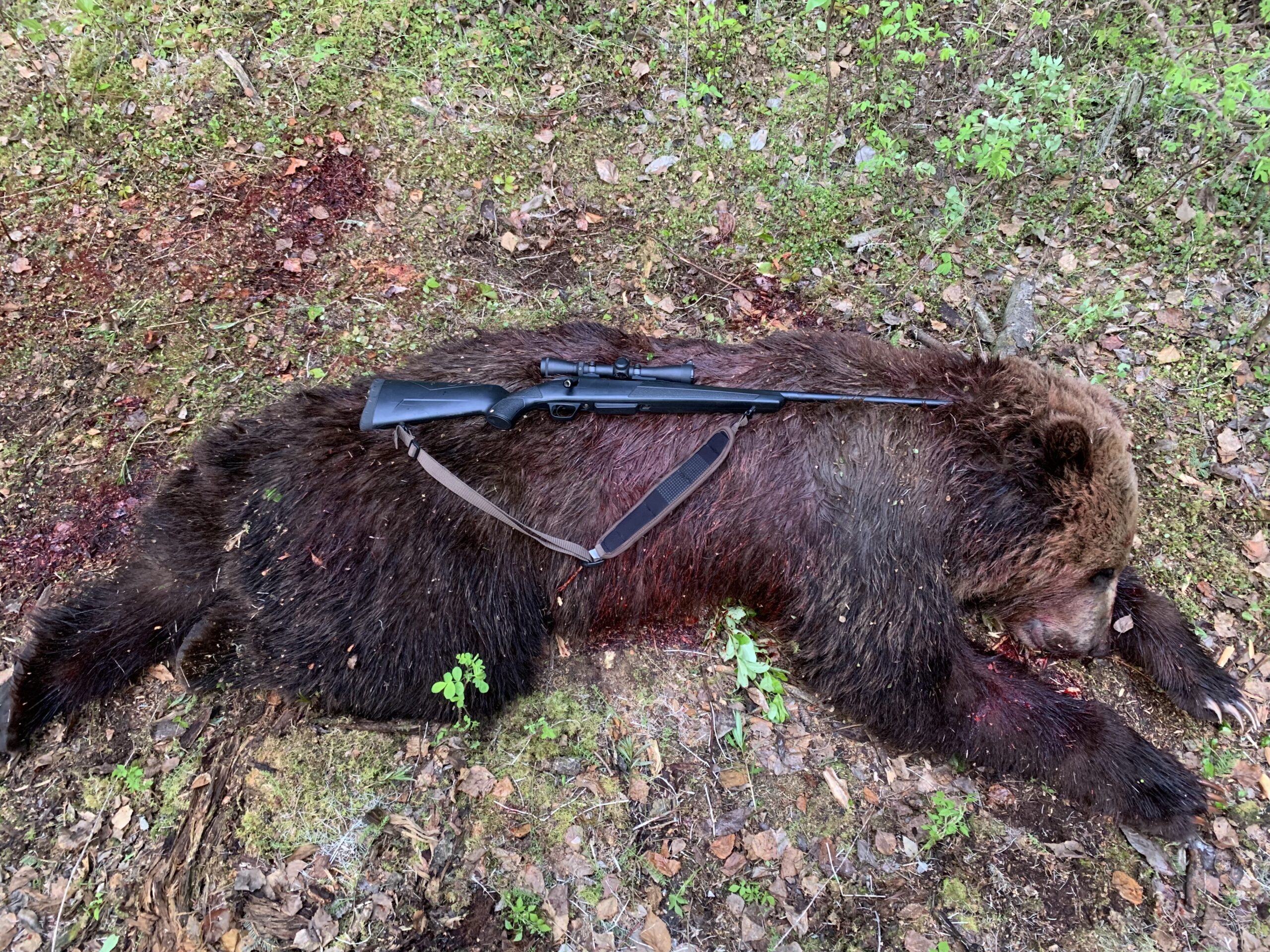
I grew tired, but stayed alert, hoping that the grizzly would make a third appearance at about the same time he had before. At 2:30 am, my heart stopped as I saw a bear’s hind leg move forward through a gap in the dimly-lit timber. I readied myself, but it was the second black bear returning. I can’t believe I’m not shooting this bear I thought as I watched the round-headed black bear feed. I held firm, reminding myself that shooting this bear was a sure way to spook that grizzly if he were around.
I’m calling it at 3:45, I decided. I’m tired.
At about 3:30, I distinctly heard something walk into the water down at the river, and it sounded like a bear. I listened to hear it climb back out, in case it was that grizzly swimming to my side of the river. I didn’t hear anything. Then I saw the black bear standing back in the timber once again. If it comes in, I’m just gonna shoot it and be done for tonight, I told myself. As if my thoughts were spoken aloud, the black bear turned and sprinted back into the brush. Immediately, I heard a branch break towards where I’d heard the bear in the river. That’s him.
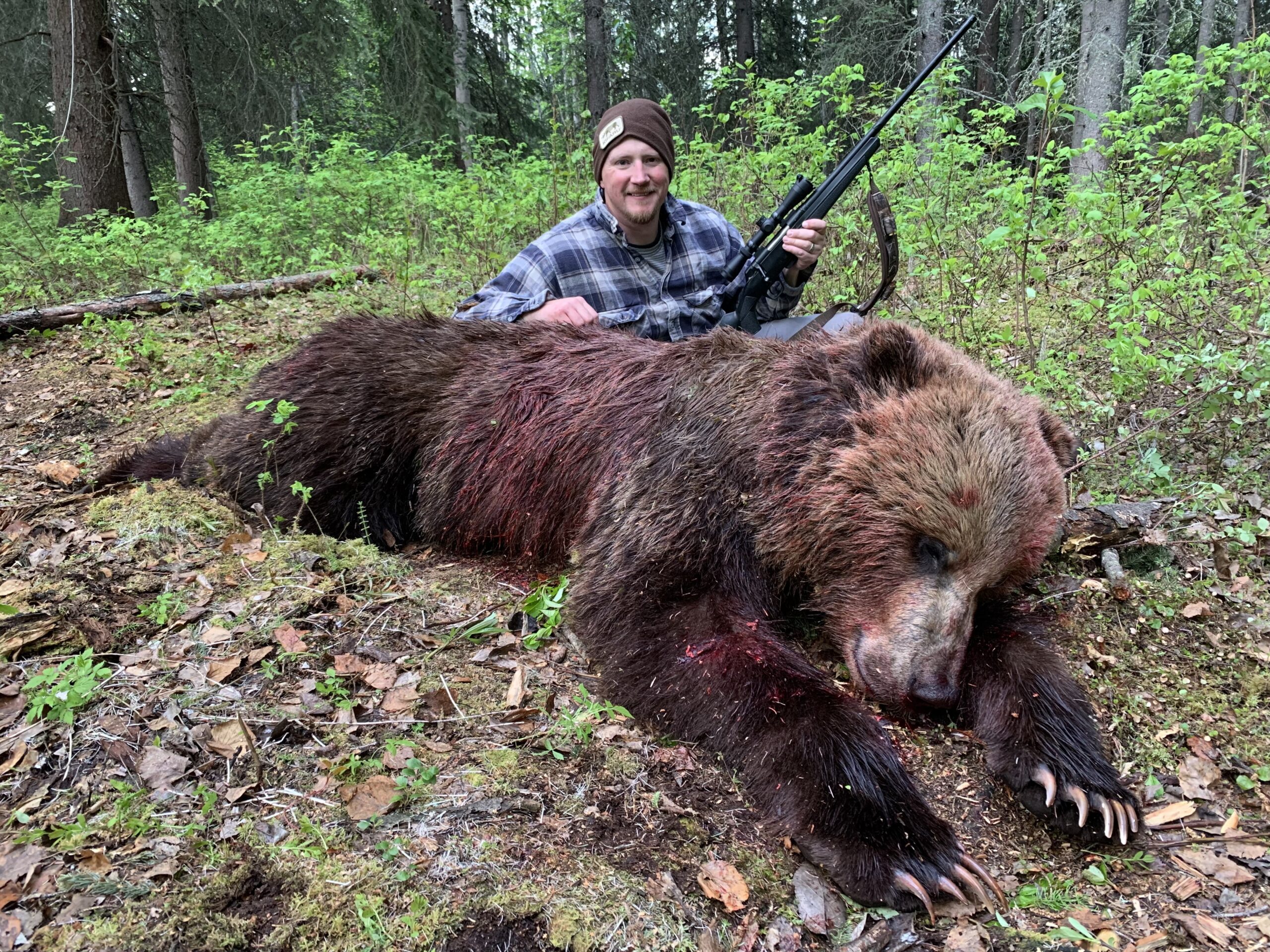
My heart started pounding as the bear approached, then dropped as I realized he was going to pass downwind. He didn’t catch my wind, but surely it was over when he smelled my tracks and huffed. To my surprise, he continued circling through the brush around the bait and I could tell he was going to burst from the trees to my left. I readied my rifle. I usually try to take the first good lung shot I get on a grizzly bear at a bait site. They rarely hold still for very long, and are always on the lookout for danger.
As the bear stepped out of the trees at a slight quartering-to angle, I broke the shot, placing it just behind the shoulder to hit both lungs. The bear leapt into the air, spinning as I chambered another round. As he landed on all fours, I fired another shot through the lungs. He spun again, flinging himself around and growling. At the next opportunity, I fired a third shot, hitting him in the shoulder. He was on the ground before the echoes from the first shot had stopped ringing in the trees.
The first shot had sealed the bear’s fate. The second and third were simply because that’s what you do when you shoot a bear and he’s still up and moving—I’d have shot him twice or three times with my .338 or .375 too. Two of the three shots were pass-throughs and the third was through the shoulder. I found it under the skin on the off-side, peeled back just as a partition should be.
I’m not shy about expressing my opinions on bear hunting cartridges—and the why behind those opinions. Through experience, I’ve seen that medium-sized cartridges like the .243, 6.5 Creedmoor, and .25/06 Remington are excellent choices for black bears and even larger game. The 6.5 Creedmoor isn’t at the top of my list for grizzly bears or brown bears, but that doesn’t mean it’s a wimp. Frankly, the only remarkable or surprising thing about killing a big grizzly with a 6.5 Creedmoor is that people think it’s something special or remarkable. It’s not. I know more than a handful of folks who have done it before, and they weren’t surprised that it worked either.
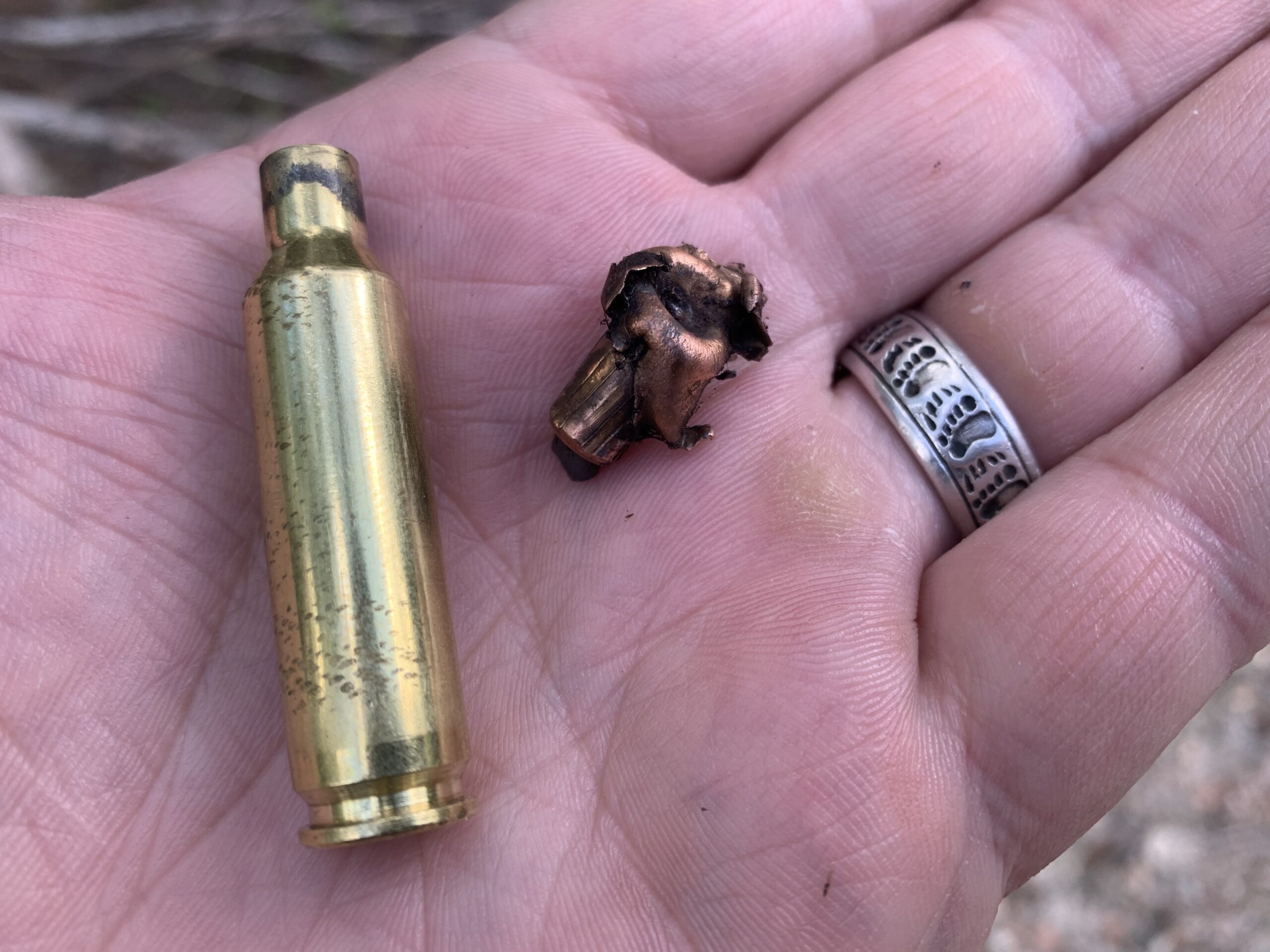
Larger calibers can certainly offer more forgiveness and do more damage—the Creedmoor is far from my first choice for backing up a brown bear hunter or tracking poorly-hit bears into the alders. If your use of the rifle is likely to be at very close range and defensive in nature, sure, go big. But within a couple hundred yards, with good shot selection, even the soy espresso mocha latte of the cartridge world is perfectly capable of killing the biggest bears quickly. I’d wager that it killed this bear just as quickly as my .375 Ruger would have in the same scenario—though I’m not equating the two.
If you’re annoyed by the Creedmoor’s popularity, I’ve got bad news for you. It’s not going away. It’s established itself as a shootable, accurate, and potent game killer worldwide. Even in the Mongolian steppe, if you have to borrow a rifle like John B. Snow had to on his remarkable Argali hunt, don’t be surprised if it’s a Creed. And don’t be surprised when it gets the job done.
